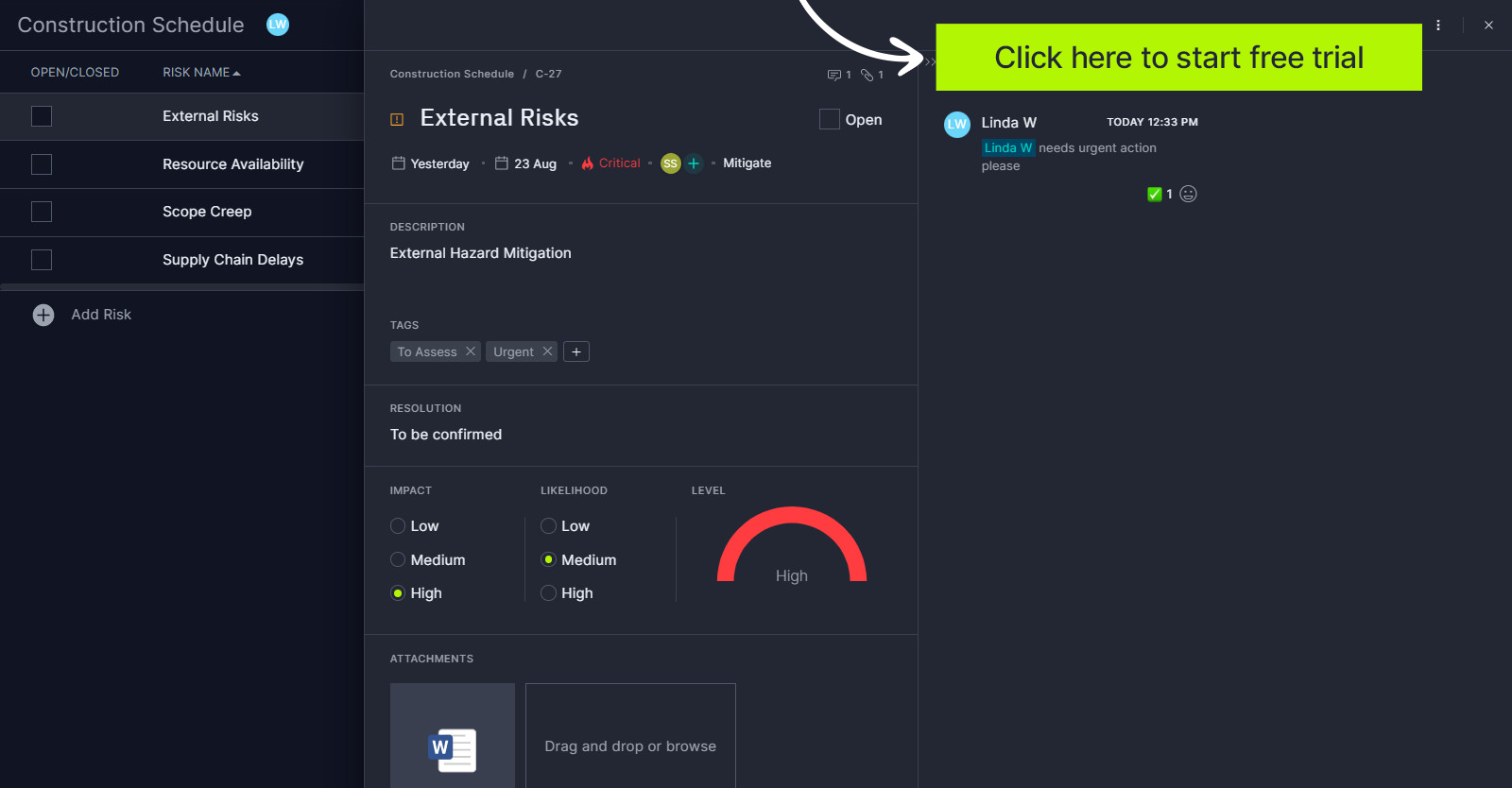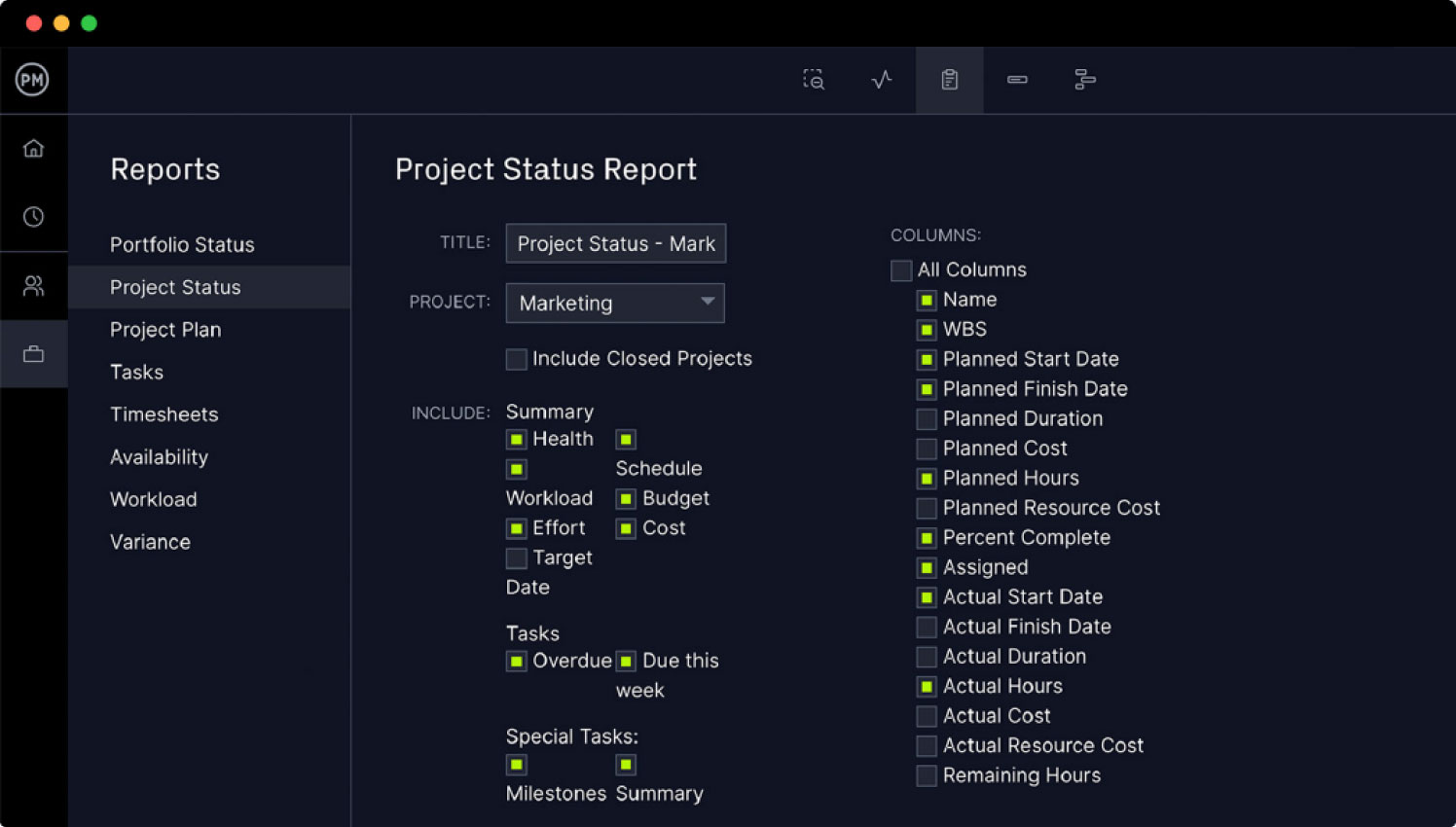Do you know what can be scary? Project risk. Just the word risk can evoke the same kind of primal, fight-or-flight fear in project managers.
But risk shouldn’t be feared, it’s just another part of the project to manage. All projects have some element of risk while other projects are inherently high-risk. (We’re talking about the former here.) Thinking of risk as a bad thing can lead to a poor outcome. You don’t take risks like going skiing without the right equipment, or eating poisonous puffer fish that hasn’t been properly prepared, right?
In our personal lives as well as our professional lives, risk-taking is something we do, but it must be carefully considered before we dive in.
What Is Positive Risk?
Risk is thought of as negative and in many cases it is. But risk can also be positive. Both types of risk share the fact that they are unexpected, but negative risk is something to mitigate, while positive risk is something to take advantage of. Positive risk is when that unexpected event is good for your project. It’s important to identify both negative and positive risk.
ProjectManager is award-winning project management software that helps you identify, manage and track risk in your projects in real time. Our risk management features help you monitor positive and negative risks and add the potential impact and even the likelihood of that risk occurring in the project. If it shows up, then you can track it to either resolve the bad risk or exploit the good risk. Get started with ProjectManager today for free.

Why Project Risks Can Be Good
We’ve all been conditioned to think of risks as negative. But risk is a way to safeguard yourself by preparing for the possibility of failure or danger. That brings us back to the skiing example. The risk of going skiing without the right gear is that you’ll fall over and break your leg, ruining your holiday and having to rely on your friends and family to care for you when they’d rather be out on the slopes.
Sure, that’s obvious. Always be prepared. However, what about the things you can’t prepare for? Happy accidents that may lead you down a road you’d never have thought to explore. What if taking that risk meant discovering something new?
Risks can have positive outcomes, both in our personal lives and in our projects. Sometimes risk is a disguised opportunity.
Related: Free Risk Register Template
Positive Risk vs. Negative Risk
Risks are unexpected, but they can have either a positive or negative impact on your project. As noted above, you’ll want to take advantage of the good risk if it shows up in your project and resolve the bad one. Positive risks can improve your profitability, add to your market share and give you a competitive advantage. Negative risks can delay progress, cause you to overspend and even threaten the viability of your project.
Types of Positive Risk
Figuring out what is a positive risk (which can take a number of forms) can be hard because our brains are so conditioned to think of risks as bad. A simple way to identify positive risk is the same way you would identify negative risk: by working with your team to come up with a list of opportunities that could impact the project.
- Cost risk: This is a risk of exceeding one’s budget or failing to deliver value to offset project costs
- Schedule risk: This risk involves failing to meet deadlines, milestones and other scheduling plans
- Performance risk: That the product won’t work as expected or the team isn’t executing their tasks as planned
- Scope risk: Also known as scope creep, when project objectives aren’t well defined and new features are added without changing the cost or schedule of the project
- Legal risk: This is when a company doesn’t comply with regulations or contractual terms
Once you’ve identified all the risks that’d have a positive impact on your project, you can think about how to respond to them.
Positive Risk Examples
To better understand what positive risk is, here are a few brief examples.
- Receiving so many signups for our new product that it crashes our website
- Getting swamped by press requests because our project is so popular
- Using new technology that leads to greater efficiency, reduced labor and reduced wages or costs to the organization
- Change in policy that’ll make it easier and faster for you to deliver your project
3 Ways to Respond to Positive Risk
These are your risk response strategies, and they are a bit different from the types of response you would use to deal with negative risk.
- First, exploit the risk. Exploiting a risk means doing everything you can to increase the chance of it happening. For example, if you want to get more hits on your new website, devote lots of time drumming up positive publicity by contacting journalists, writing press releases and getting your in-house communications team involved.
- Share the risk with someone else, as sometimes you can’t get the full benefit of an opportunity working alone. For example, if you want to make sure that the warehouse is ready to cope with all those orders, work on the order process with that team. Put in place a just-in-time shipping process so you don’t have too much stock lying around, but it’s available at short notice. Your project benefits from customers being able to get their hands on the product quickly, and the warehouse team benefits from not having to deal with too many orders that are difficult to fulfill at any one time.
- Do nothing. This is always an option for negative risk, too. Knowing possible scenarios – good and bad – is sometimes planning enough. You can choose whether a response is merited if the eventuality occurs.
How to Manage Positive Risk
Manage positive risk in the same way that you would manage negative risk. Here are the basic risk management steps you can follow in project management.
1. Identify all Potential Positive Risks
Brainstorm all the good things that could happen, such as:
- Running out of inventory faster than you anticipated during a new product launch
- Selling more copies of our widgets than anticipated, so the warehouse is swamped with orders
- Needing to expand into a bigger office space because your company is growing so quickly
2. Determine the Likelihood and Potential Impact of Positive Project Risks
To know whether to respond quickly or not to a positive risk, you need to identify if, but also determine the likelihood of it occurring. This will help you find it. Then you have to determine what the potential impact on the project will be. This will help you respond to it.
3. Assign a Risk Owner to Each Positive Risk
The next step is to assign the risk to someone on the team. This means that the team member will be on the lookout for it and, if it does appear, they’ll be tasked with responding to it. By having someone on the team own that risk, you improve the chance of finding it and taking advantage of it.
4. Plan Risk Response Strategies
The risk owner needs to have direction on what to do if the issue arises in the project. Therefore, the project manager should have a risk response plan in place that strategically aligns the response to that risk with the overall objectives of the project and the organization.
Risk Management Templates
Project management software can help manage positive risk in projects, but if you’re not ready to upgrade, then ProjectManager has dozens of free project management templates for Excel and Word that you can download right now. Here are a couple of risk management templates free to download.
Risk Tracking Template
Once you have identified a positive risk and have set about to exploit it for the good of your project, you’ll want to use our free risk tracking template for Excel to capture how to respond. It lists your risks, impact, response, risk level and more.
Risk Matrix Template
The free risk matrix template for Excel helps you determine the severity and likelihood of a risk. It does this by creating a color-coded board on which you place the risk to indicate if its severity is from insignificant to severe and its likelihood is from rare to almost certain.
How ProjectManager Helps You Manage Project Risks
Our free risk management templates are a good starting point, but you’ll quickly find them frustrating. These static documents must be manually updated, which takes time and effort away from the project. ProjectManager has risk management features built into our tool where you can note the severity and likelihood of it occurring and, if it does show up, track the risk in real time as it’s mitigated or exploited. But that’s only the start of what our software can do.
Use Multiple Project Planning Tools
Managers create the risk management plan, but the team is tasked with resolving those issues when they arise in the project. Our multiple project planning tools make it easy for managers to schedule tasks and resources on robust Gantt charts and assign work to team members, who can execute them on visual kanban boards or task lists. Stakeholders can stay updated on the progress of managing the risk with project calendars. All project views are simultaneously updated in real time so everyone is always working on the same page.

Track Progress With Online Project Reporting
Monitor the progress of the management of project risk with tools such as our real-time dashboard for a high-level overview or customizable reports that can be filtered to detail only the data you want to see. Unlike lightweight tools, our dashboard doesn’t require a time-consuming setup. Just toggle over and it’s working for you immediately. You can also get more data with easy-to-generate status reports, portfolio reports and more. They can also be shared with your stakeholders to keep them updated.

In order to take advantage of positive risks in a project, you need to have the tools to help you identify, manage and track them in real time. Our software has risk management features, but also resource management and task management tools to keep your project productive.
ProjectManager can help you keep risk logs up-to-date. You or your team can collaborate on project status, including all forms of risks, and monitor risks online. Get started with ProjectManager today for free.

